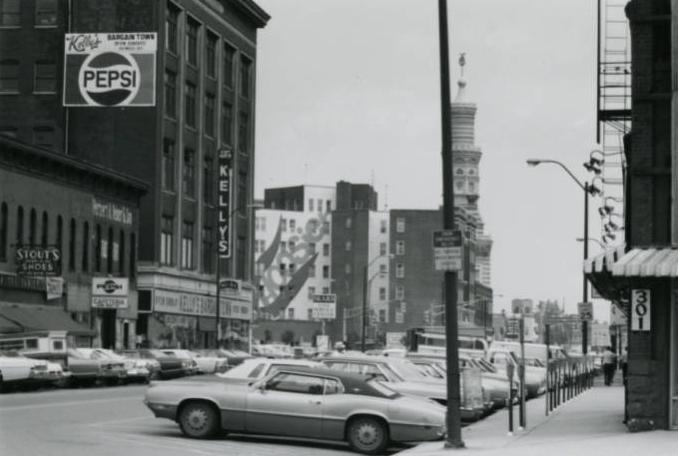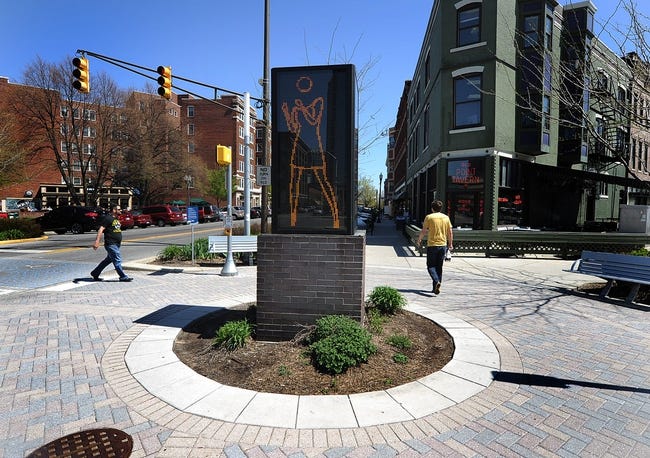Located on the northeast side of the city is Massachusetts Avenue–one of four diagonal streets originally laid out in plat of Indianapolis in 1821. The street has since become the bustling historic and cultural district known as Mass Ave.

Massachusetts Avenue was created to be a thoroughfare along which residents could travel from outer neighborhoods to reach the commercial areas of the city center. With the Citizens Avenue Railroad trolley and subsequent public transportation servicing the street, Mass Ave became a commercial corridor in its own right.
In the late 1800s and early 1900s, businesses such as (1886) were established in the Italianate commercial buildings, while community buildings like the (Das Deutsche Haus, 1894) and the (formerly the Murat Temple, 1909) were purpose-built. One of the city’s tallest historic buildings, the Marott Department Store, was built along Mass Ave in 1906.

The area became home to several industrial buildings as well. The opened the first of seven buildings between North Street and Massachusetts Avenue in 1922 and the opened in 1931.
Like many other areas in the city, Mass Ave began to suffer a decline after World War II. This circumstance worsened with the construction of the I-65 and I-70 interstates in the 1960s, which cut off most through traffic, isolating the area from nearby neighborhoods. As a result, both residents and businesses moved out leaving homes vacant and businesses boarded up.

Mass Ave remained in a state of urban blight until the push for historic preservation in the 1980s jump-started its revitalization. In December 1982, Mass Ave (the 300 block through the 900 block) was listed in the National Register of Historic Places for its historical and architectural significance–its mixture of historic lower and upper-class residences, commercial buildings, and institutional architecture designed by the city’s leading architects.
Being designated as a federally recognized historic district sparked new interest in the area. began to move into the area, the first being Patrick King Contemporary Art in 1982, and brought the art crowd with them. Long established businesses in the area began to shift their offerings to appeal to these new audiences. The , for example, went from a daytime bar for factory workers to a popular nightspot featuring regular jazz performances.

Community institutions got new life through restoration and reuse. The Athenaeum gained the as a tenant in 1992, its Rathskeller restaurant continued to operate with an added beer garden and outdoor concert venue, and various art and education organizations took up office and performance space there. In 1995, Live Nation, an entertainment company, became a tenant of the Old National Centre and brought in popular performers, drawing more business to Mass Ave.
With new art galleries, restaurants, and small businesses, Mass Ave became a desirable location to live and play. By 2000, there was a push to make Mass Ave a locally protected historic district, and the next year the Massachusetts Avenue Commercial Development Plan was created to help preserve historic structures and encourage sensitive new development. In 2003, Mass Ave was named one of Indianapolis’ six cultural districts.

In continued efforts to preserve and revitalize Mass Ave, the Chatham-Arch & Massachusetts Avenue Historic Area Preservation Plan was created in 2006. Because the 600 and 700 blocks of Mass Ave lie in both the historic district and the Massachusetts Avenue historic district, the plan was created to encompass both historic districts.
The redevelopment of Mass Ave continued to grow with new projects like , an adaptive reuse of the Coca-Cola Bottling building that included retail spaces and a hotel, and the constant influx of new locally-owned businesses and restaurants.
Mass Ave continues to thrive as one of the most popular destinations in the city.

Is this your community?
Do you have photos or stories?
Contribute to this page by emailing us your suggestions.